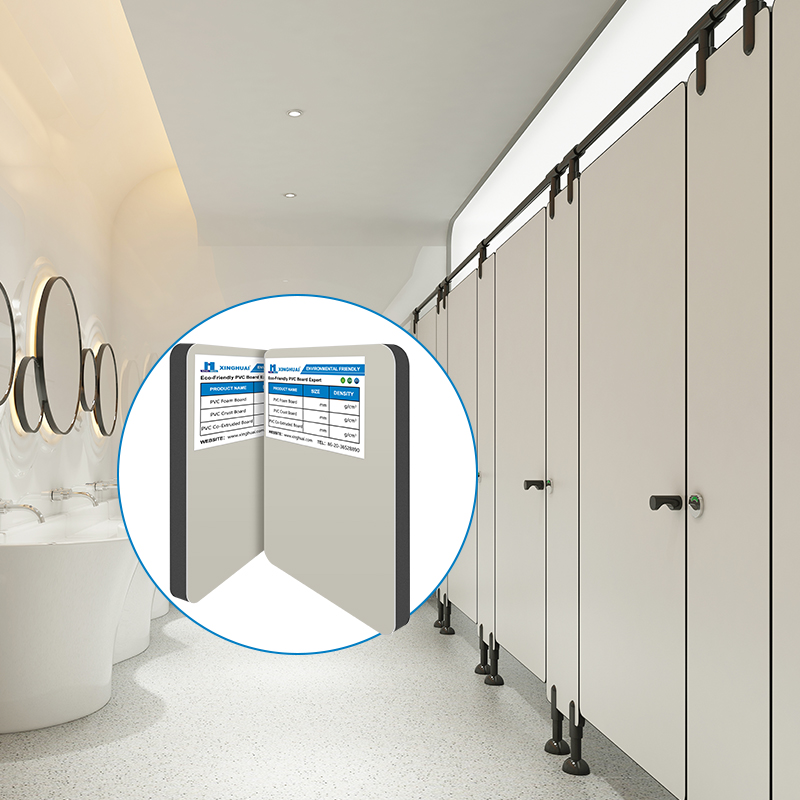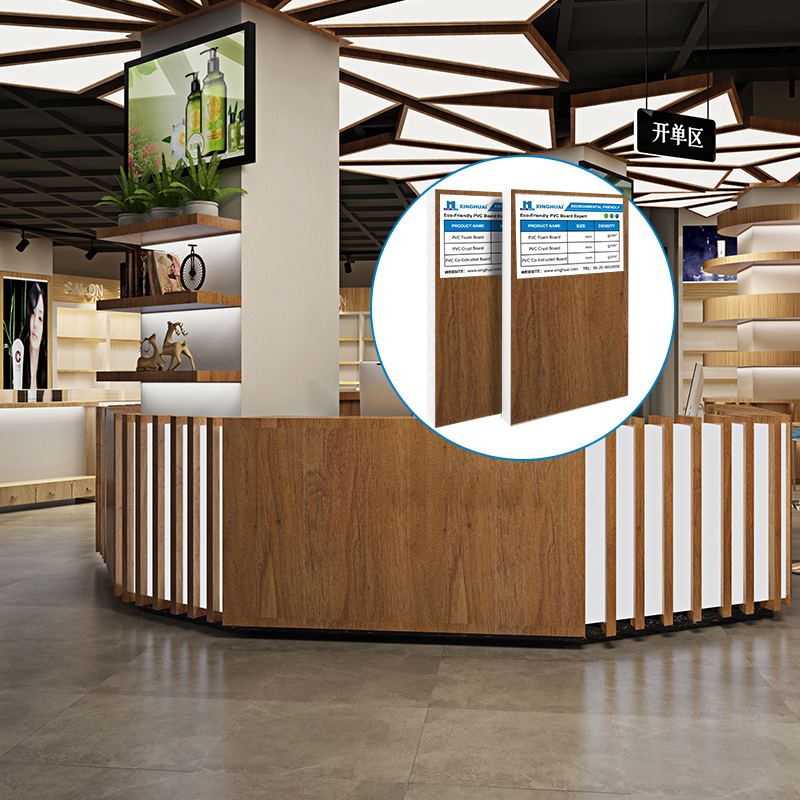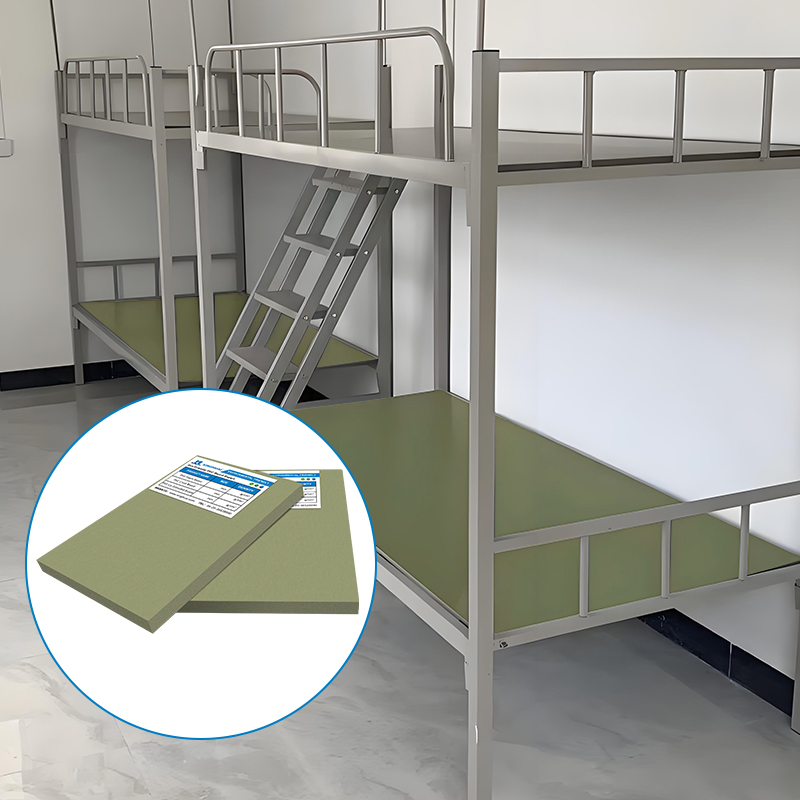The structural differences between PVC skinned boards and ordinary PVC boards are fundamental, shaping their distinct properties and applications in various industries. PVC skinned boards, a specialized type of PVC foam panel sheet, boast a unique layered construction that sets them apart from the homogeneous structure of ordinary PVC boards, such as PVC plastic foam board. Understanding these structural variations is crucial for selecting the right material for specific projects, whether it’s for interior decoration, signage, or construction.
At the core of their structural difference lies the composition of PVC skinned boards. Unlike ordinary PVC boards, which typically have a uniform structure throughout, PVC skinned boards feature a dual-layer design: a dense, rigid outer “skin” and a lightweight, foamed inner core. This skin is an integral part of the board, formed during the manufacturing process rather than applied as a separate layer. The inner core, on the other hand, consists of a network of closed cells that reduce weight while maintaining structural integrity. This layered approach gives PVC skinned boards a perfect balance of strength and lightness, a characteristic not found in most ordinary PVC boards that lack such a defined skin-core structure.
Ordinary PVC boards, including PVC plastic foam board, are often structured as a single, homogeneous layer. Their composition is consistent from surface to core, with no distinct skin or foam core separation. This uniform structure means that their properties, such as density and rigidity, are the same throughout the board. While some ordinary PVC boards may have a foamed structure, they lack the dense, reinforced skin that defines PVC skinned boards. This difference in structural design directly impacts their performance, with ordinary PVC boards often being either heavier and more rigid or lighter but less durable than PVC skinned boards.
Another key structural difference is in the materials and manufacturing processes that shape these boards. PVC skinned boards are crafted using advanced extrusion techniques that precisely control the formation of the skin and core. The outer skin is made from high-density PVC resin, pvc foam panel sheet ensuring a smooth, hard surface that resists scratches and impacts. The inner core is created by introducing a foaming agent during extrusion, which forms the lightweight, cellular structure. In contrast, ordinary PVC boards, such as basic PVC foam panel sheet,pvc foam panel sheet pvc plastic foam board are manufactured using a simpler extrusion process without the specialized controls needed to form a distinct skin. This results in a board with a more uniform density and texture, lacking the enhanced surface properties of PVC skinned boards.
When it comes to specific types of ordinary PVC boards, such as white foam PVC, the structural simplicity is even more evident. White foam PVC is a popular ordinary PVC board known for its bright color and lightweight nature, but its structure is homogeneous, with no dense outer skin. The entire board is made up of a foamed PVC material with consistent cell structure throughout. This means that white foam PVC may not offer the same level of surface durability as PVC skinned boards, as its surface is just as porous and less rigid as its core. In contrast, PVC skinned boards, even when available in white, pvc foam panel sheet pvc plastic foam board have a dense skin that protects the inner core and provides a more robust surface.
Laminated PVC ceiling materials and PVC laminated foam board are other examples of ordinary PVC boards that highlight structural differences with PVC skinned boards. Laminated PVC ceiling products typically consist of a base PVC foam panel sheet with a decorative laminate layer applied to the surface. This laminate is a separate material bonded to the board, unlike the integral skin of PVC skinned boards. Over time, pvc foam panel sheet this laminate can peel or wear away, especially in high-moisture environments. PVC laminated foam board, pvc foam panel sheet pvc plastic foam board similarly, pvc foam panel sheet has a laminated surface that is not inherently part of the board’s structure, making it more prone to delamination compared to the fused skin of PVC skinned boards.
The structural design of PVC skinned boards also affects their dimensional stability, a key difference from ordinary PVC boards. The dense outer skin acts as a protective barrier, reducing the board’s susceptibility to warping or shrinking due to temperature and humidity changes. The foamed core, with its closed-cell structure, further enhances stability by minimizing moisture absorption. Ordinary PVC boards, such as PVC plastic foam board, lack this protective skin, making them more vulnerable to dimensional changes. White foam PVC, for instance, may expand or contract more significantly in fluctuating environments, leading to gaps or buckling in installations.
In terms of surface finish, the structural difference between PVC skinned boards and ordinary PVC boards is striking. PVC skinned boards have a smooth, consistent surface due to their dense skin, which is ideal for painting, printing, or laminating if needed. This surface uniformity is maintained even after cutting or machining, as the skin extends throughout the board’s thickness. Ordinary PVC boards, including PVC foam panel sheet and white foam PVC, often have a more porous or textured surface due to their homogeneous foamed structure pvc foam panel sheet pvc plastic foam board . While they can be painted or printed on, achieving the same level of surface smoothness as PVC skinned boards is challenging without additional treatments.
The structural differences also impact the strength-to-weight ratio of these boards. PVC skinned boards, with their dense skin and lightweight core, offer a higher strength-to-weight ratio than most ordinary PVC boards. This makes them easier to handle and install while still providing adequate structural support. Ordinary PVC boards, such as PVC plastic foam board, may either be heavier to achieve similar strength or lighter but less strong, requiring additional support in applications. Laminated PVC ceiling boards, for example, often need extra bracing due to their lower strength-to-weight ratio compared to PVC skinned boards pvc foam panel sheet pvc plastic foam board.
When examining the cross-section of PVC skinned boards and ordinary PVC boards, the structural differences are visually apparent. A cross-section of a PVC skinned board reveals a clear distinction between the thin, dense skin and the lighter, foamed core. In contrast, a cross-section of an ordinary PVC board, like white foam PVC or PVC plastic foam board, shows a uniform structure with no visible layers. This visual difference is a direct result of their manufacturing processes and structural designs, and it serves as a quick way to identify the type of board.
The structural design of PVC skinned boards also makes them more resistant to moisture compared to many ordinary PVC boards. The dense skin acts as a barrier, preventing water from penetrating into the core, while the closed-cell structure of the core further inhibits moisture absorption. This makes PVC skinned boards suitable for humid environments, such as bathrooms or kitchens. Ordinary PVC boards, including some PVC foam panel sheet and white foam PVC, may absorb more moisture due to their homogeneous structure, leading to swelling or degradation over time. Even PVC laminated foam board, with its applied laminate, is not as moisture-resistant as PVC skinned boards, as moisture can seep in at the edges or through small gaps in the laminate pvc foam panel sheet pvc plastic foam board.
In applications such as signage, furniture, and interior cladding, the structural differences between PVC skinned boards and ordinary PVC boards become even more significant. PVC skinned boards, with their strong skin and stable core, can withstand frequent handling and exposure to the elements, making them ideal for outdoor signage or high-traffic areas. Ordinary PVC boards, like white foam PVC or PVC plastic foam board, may not hold up as well in these conditions, showing signs of wear or damage more quickly pvc foam panel sheet pvc plastic foam board. Laminated PVC ceiling boards, pvc foam panel sheet pvc plastic foam board while suitable for indoor use, may not offer the same level of durability as PVC skinned boards in high-moisture or high-traffic indoor areas.
In conclusion, the structural differences between PVC skinned boards and ordinary PVC boards are profound and far-reaching. PVC skinned boards feature a unique layered structure with a dense, integral skin and a lightweight foamed core, while ordinary PVC boards, such as PVC plastic foam board, pvc foam panel sheet pvc plastic foam board white foam PVC, laminated PVC ceiling boards, and PVC laminated foam board, have a homogeneous structure with no distinct skin-core separation. These structural variations impact their properties, including strength, durability, moisture resistance, surface finish, and dimensional stability,pvc foam panel sheet pvc plastic foam board making each type of board suitable for different applications. Understanding these structural differences is essential for choosing the right material to ensure optimal performance and longevity in any project. Whether it’s the enhanced durability of PVC skinned boards or the cost-effectiveness of ordinary PVC boards like PVC foam panel sheet, each has its place based on their unique structural designs pvc foam panel sheet pvc plastic foam board.




